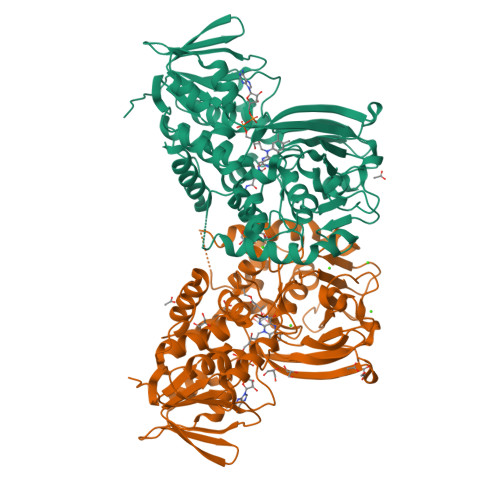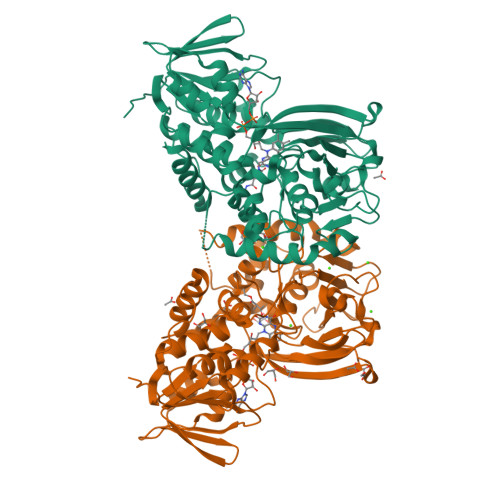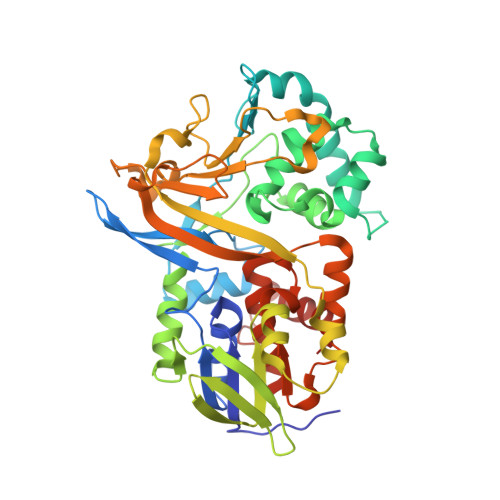Insights into a dual function amide oxidase/macrocyclase from lankacidin biosynthesis.
Dorival, J., Risser, F., Jacob, C., Collin, S., Drager, G., Paris, C., Chagot, B., Kirschning, A., Gruez, A., Weissman, K.J.(2018) Nat Commun 9: 3998-3998
- PubMed: 30266997
- DOI: https://doi.org/10.1038/s41467-018-06323-w
- Primary Citation of Related Structures:
6F32, 6F7L, 6F7V, 6FJH - PubMed Abstract:
Acquisition of new catalytic activity is a relatively rare evolutionary event. A striking example appears in the pathway to the antibiotic lankacidin, as a monoamine oxidase (MAO) family member, LkcE, catalyzes both an unusual amide oxidation, and a subsequent intramolecular Mannich reaction to form the polyketide macrocycle. We report evidence here for the molecular basis for this dual activity. The reaction sequence involves several essential active site residues and a conformational change likely comprising an interdomain hinge movement. These features, which have not previously been described in the MAO family, both depend on a unique dimerization mode relative to all structurally characterized members. Taken together, these data add weight to the idea that designing new multifunctional enzymes may require changes in both architecture and catalytic machinery. Encouragingly, however, our data also show LkcE to bind alternative substrates, supporting its potential utility as a general cyclization catalyst in synthetic biology.
Organizational Affiliation:
UMR 7365, Ingénierie Moléculaire et Physiopathologie Articulaire (IMoPA), CNRS-Université de Lorraine, Biopôle de l'Université de Lorraine, Campus Biologie Santé, 9 Avenue de la Forêt de Haye, BP 20199, 54505, Vandœuvre-lès-Nancy Cedex, France.
























